Sea Aster – Identification, Edibility, Distribution, Ecology
Aster tripolium
- Edibility – 4/5 – A superb, tender, salty succulent with a complex sweet flavour with hints of iron and nut. Even large leaves are tender and delicious and remain so after flowering and well into autumn. The flower stalks, flowers, roots and seeds are not worth eating.
- Identification – 3/5 – thick, fleshy lanceolate leaves fairly distinct within their salt marsh habitat, unmistakeable when displaying its lovely, often dishevelled mauve and yellow flowers. Easily confused with sea lavender prior to flowering which grows in exactly the same habitat and can be distinguished by its wider, less succulent leaves and unpleasant, fishy aftertaste. While not recommended for eating, sea lavender is more or less harmless, so tasting is a reasonable means to identification. Basically, if you think its sea aster, but find the taste and texture a bit disappointing, you probably have sea lavender.
- Distribution – 4/5 – common and prolific in its salt marsh habitat. I notice similar flowers in gardens though lacking the fleshy leaf structure. These are cultivars grown for their attractive blooms, but are not worth eating – in fact quite unpleasant tasting.
- Season – April to October
- Habitat – Brackish pasture, mud flats, salt marsh, estuaries, sheltered harbours. Occasionally it will grow from damp cracks in coastal rocks and crags.
- Ecology – Like other halophytes (salt tolerant plants) of the salt marsh, sea aster helps to stabilise coastal mud and sand, reducing coastal erosion and forming habitats for less salt tolerant plants to colonise. It flowers well into autumn, providing a valuable source of nectar for late-flying butterflies.
Sea aster is one of many gastronomic delights you can gather easily and sustainably on the salty water margin. It hangs out with other stars of the wild food world like Marsh samphire, sea purslane, sea arrowgrass, sea plantain, annual sea blight, scurvy grass and orache and i’m pretty envious of the sheep that get to graze these delicacies. Until they get harvested and sold for a small fortune as salt marsh lamb that is…
“…The lambs that brazen graze the cud amidst that green sublime,
Eat hay, nor play, nor see bright day beyond the autumn time…”
The Rhyme of the Aging Tup
If you haven’t properly explored a salt marsh yet, or if you only gather marsh samphire, you are seriously missing out on some of the best wild foods out there – and sea aster probably just about outdoes its marsh-mates for balancing salty tang with rich sophistication. But food is only half the pleasure here. The merse is a special place of distant gull cries, goose hangouts, strange channels, mud, solitude and cathedral skies.
Sea aster is a tenacious and unkempt plant (admirable qualities in anything) that manages not only to thrive in salty gloop, but to look pretty and charming too – in an enchantingly dishevelled way. I’m with Robert Herrick on this one:
“…A winning wave, deserving note,
In the tempestuous petticoat;
A careless shoe-string, in whose tie
I see a wild civility:
Do more bewitch me, than when art
Is too precise in every part.”
Delight in Disorder
Sea aster leaves are practically built for rolling in wild sushi, but will also lift a salad or stir-fry to new heights. Chefs I have worked with get quite excited by not only its flavour, but its texture. Paul Wedgewood made a savoury panna cotta with it up at Crail Food Festival which comes out a spectacular bright green. I ate it so fast, this is the only picture I got of it. See how he even wore a shirt with complimentary colours…these chefs think so much about presentation…
I also enjoy sea aster pickled. Its crunch holds up well in a slightly sweetened white wine vinegar with some wild herbs in it. I added coriander grass and green alexander seeds and some wild thyme, but do please find your own combo. Recipes are overrated.
Sea aster is neither hard to find or hard to recognise, but is highly rewarding – so I strongly recommend getting to the coast and adding it to your basket.
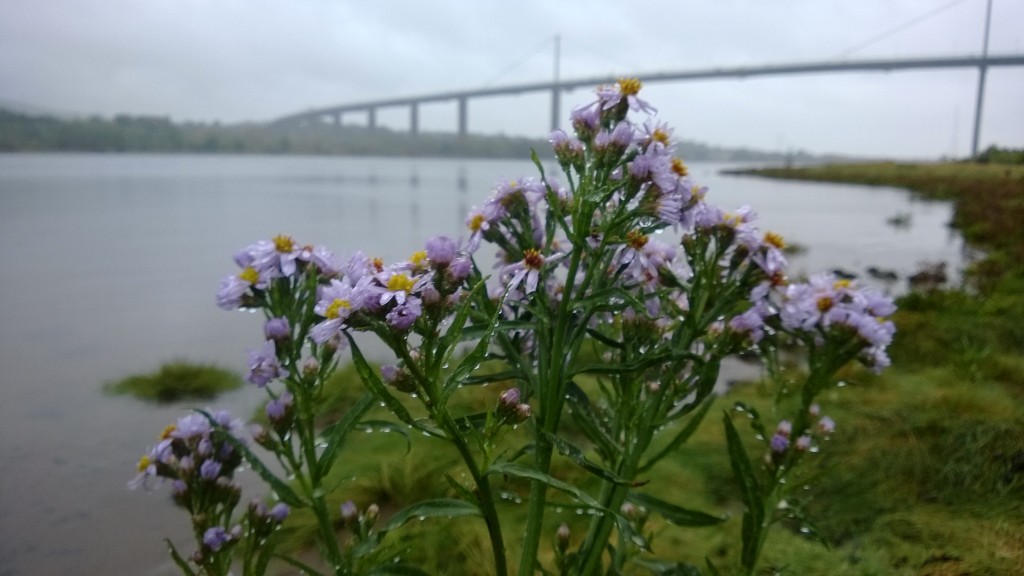
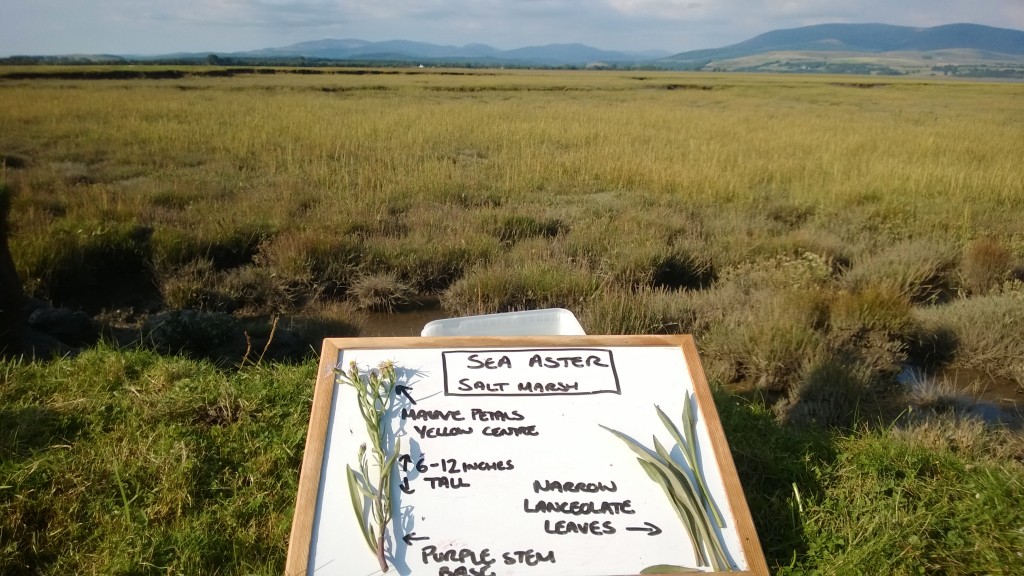
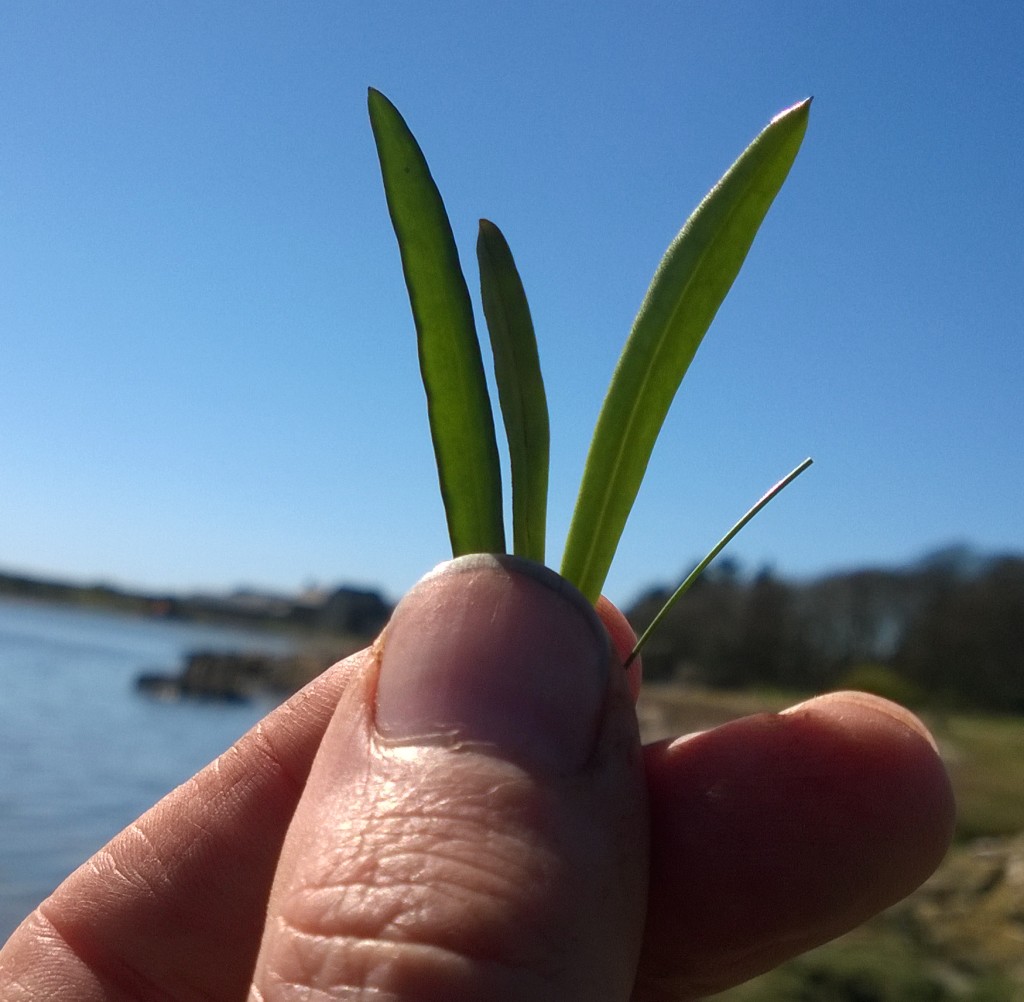
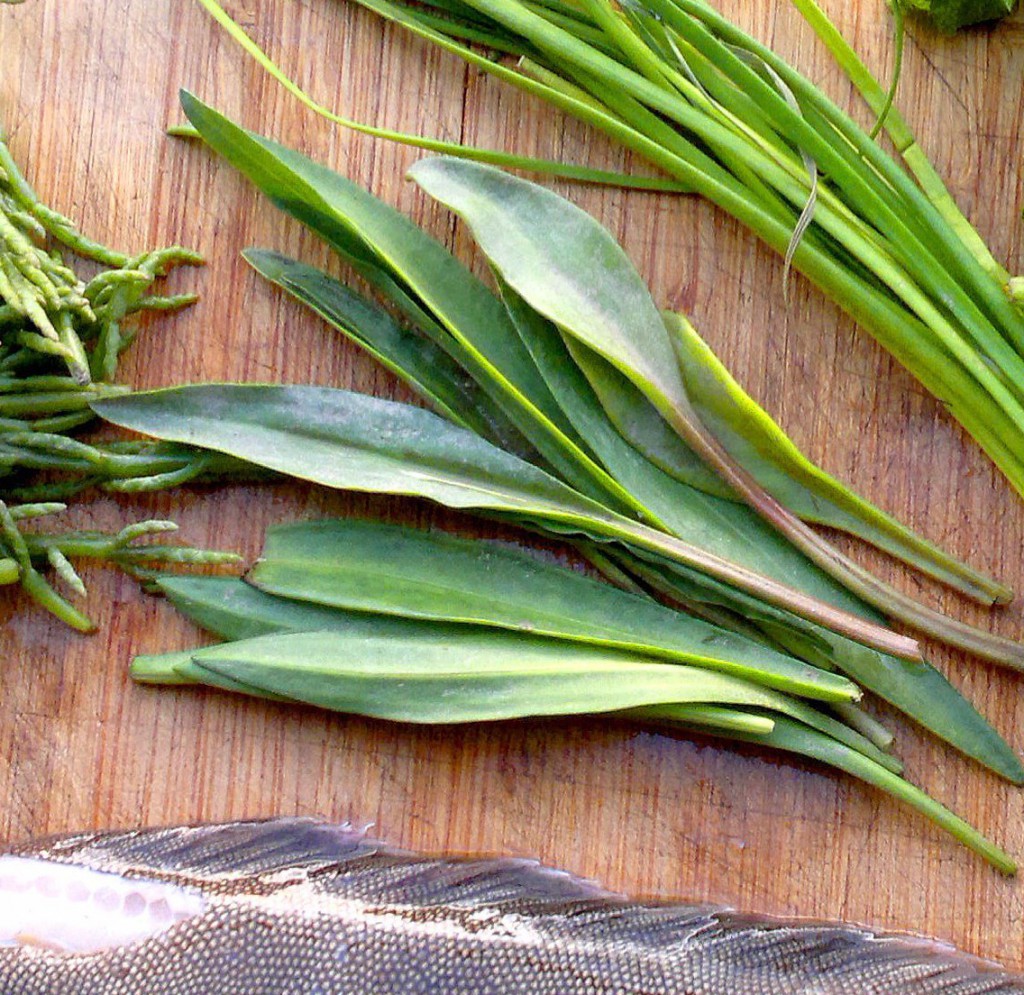
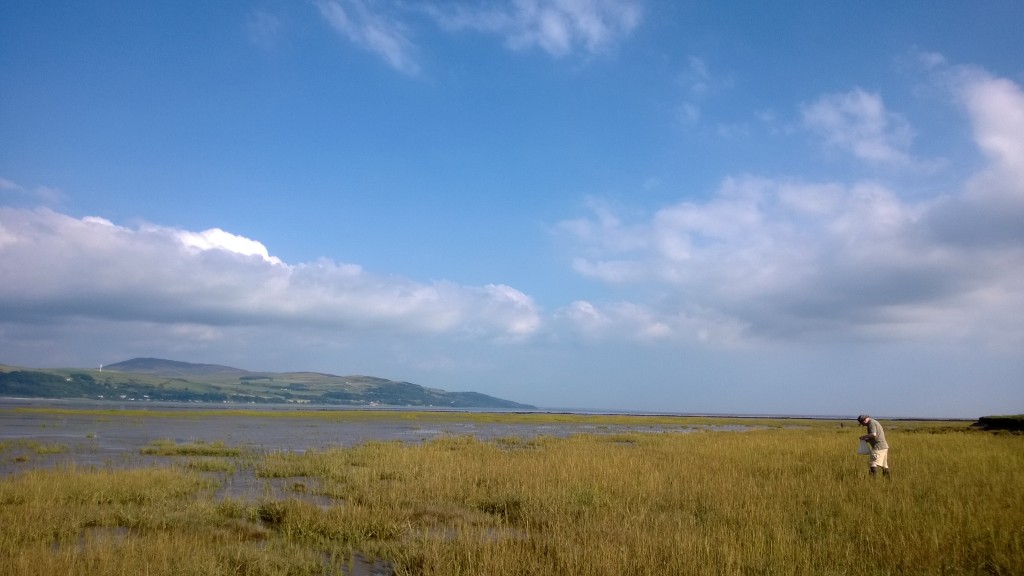




1 Comment
I came across sea aster in a green grocers by Bracklesham Bay the other day. He just gave me a few leafs to try and I was blown away. It seams it’s easy to find in the coastal area down south. But a little bit more tricky or hellishly expensive in London. Best go pick supplies soon. Seriously recommend if you haven’t tried it.